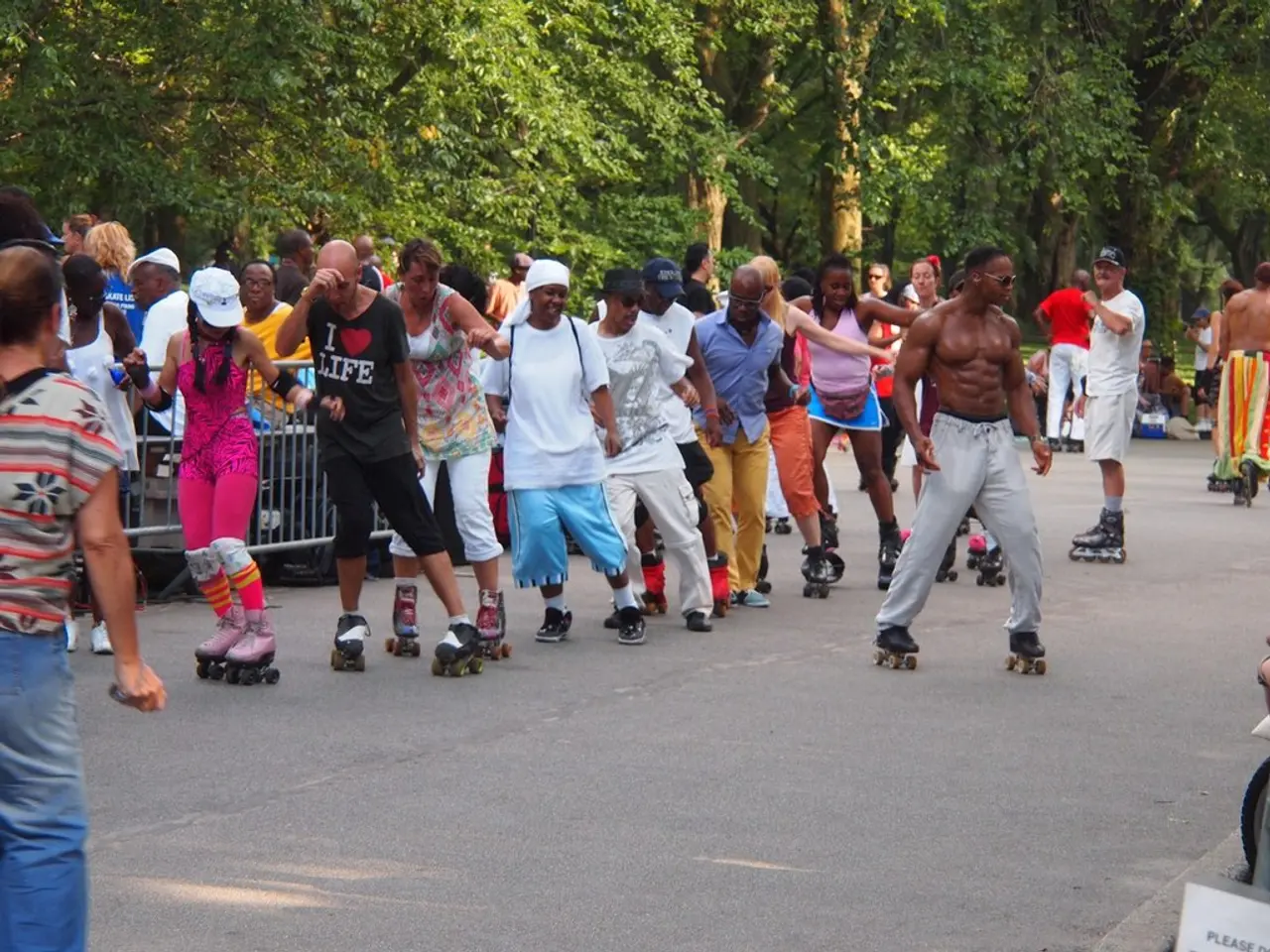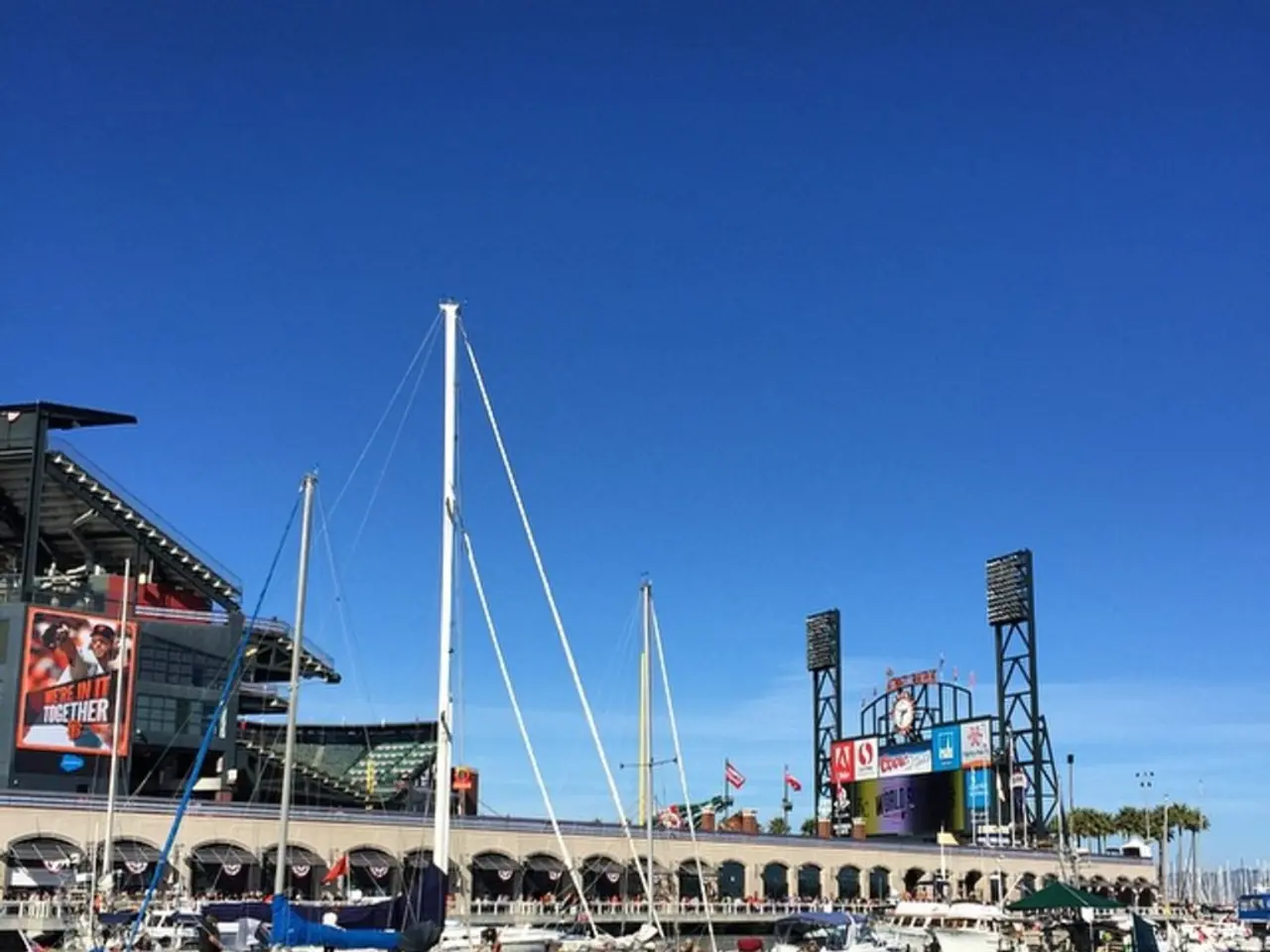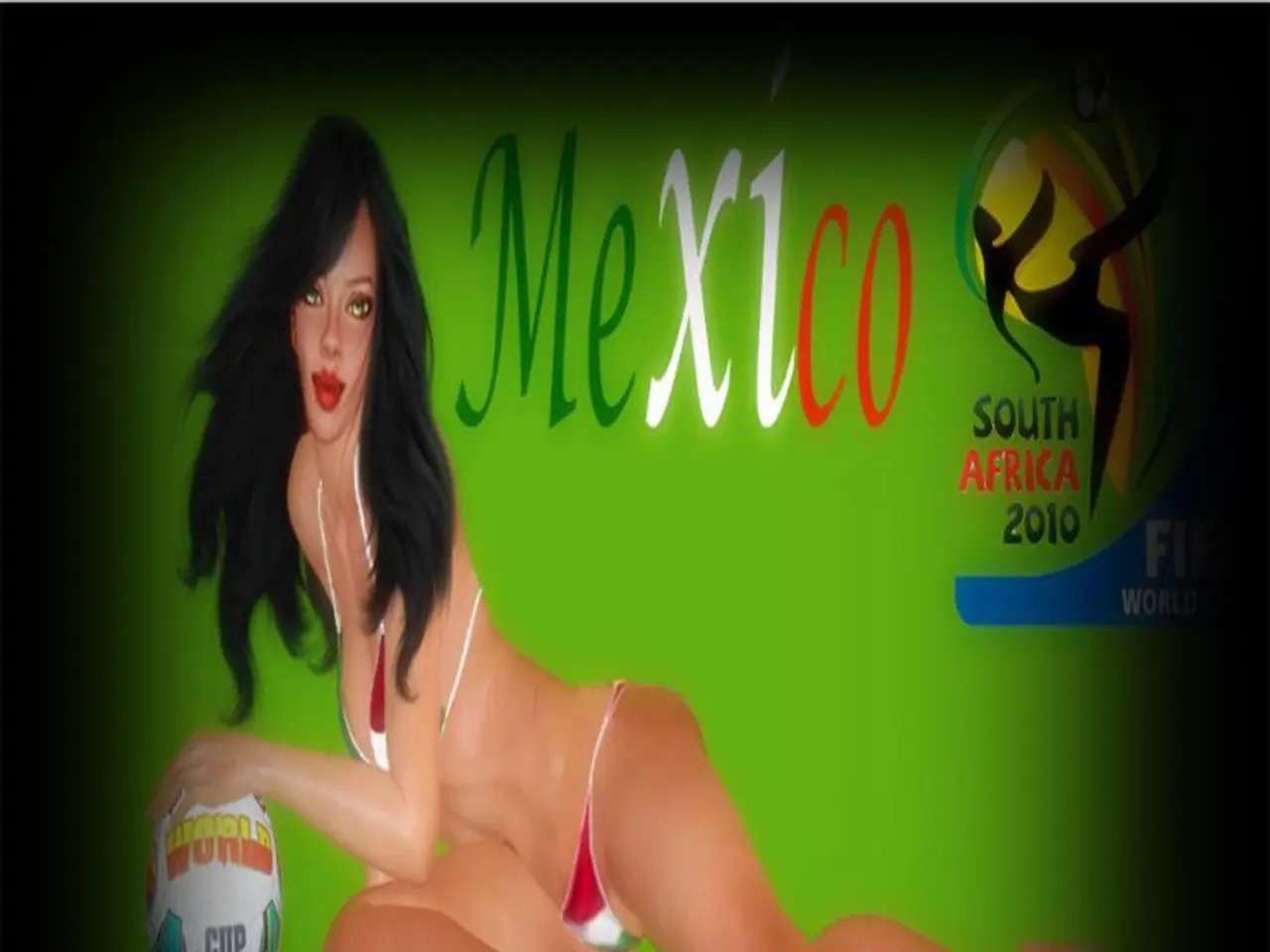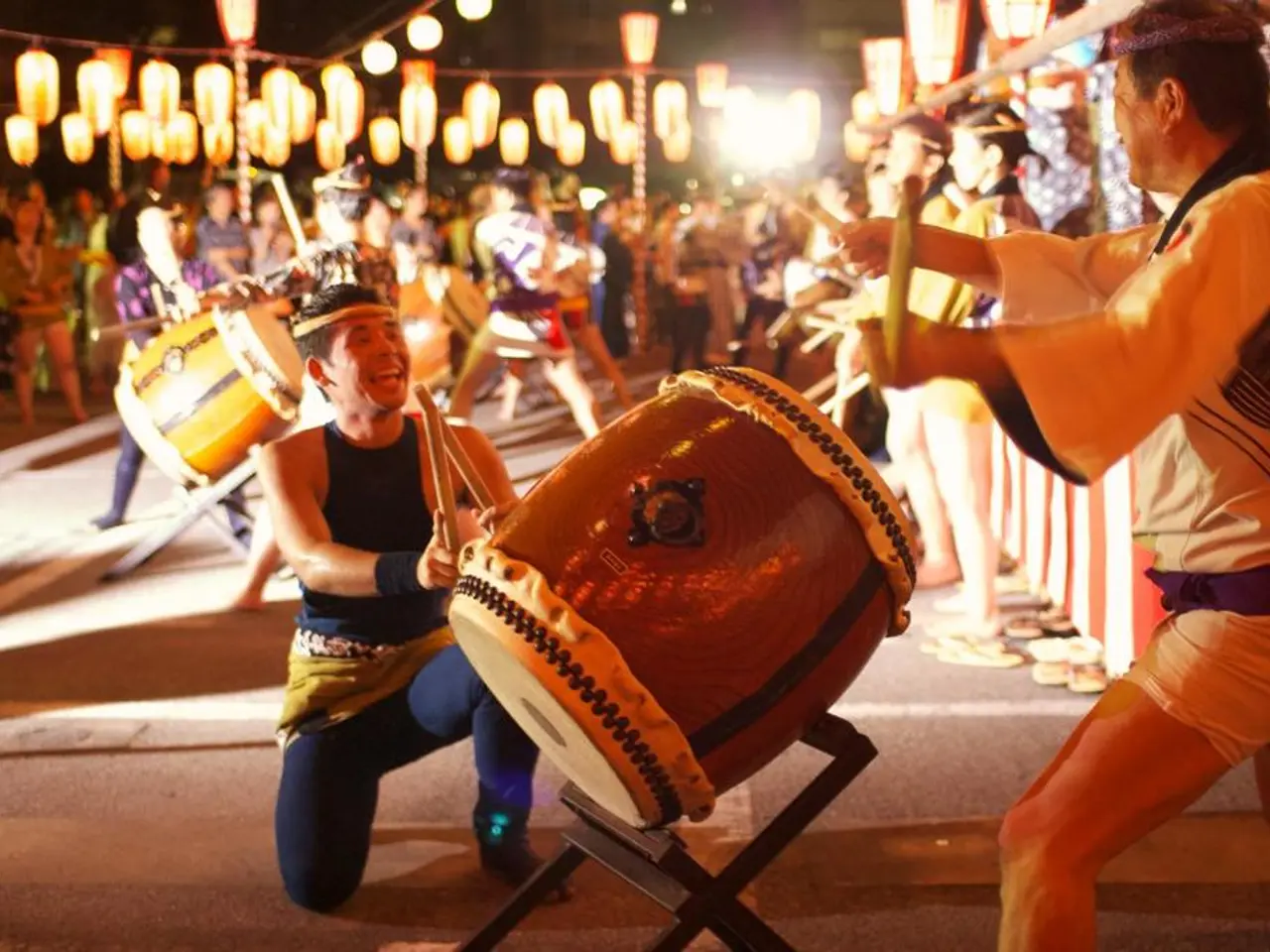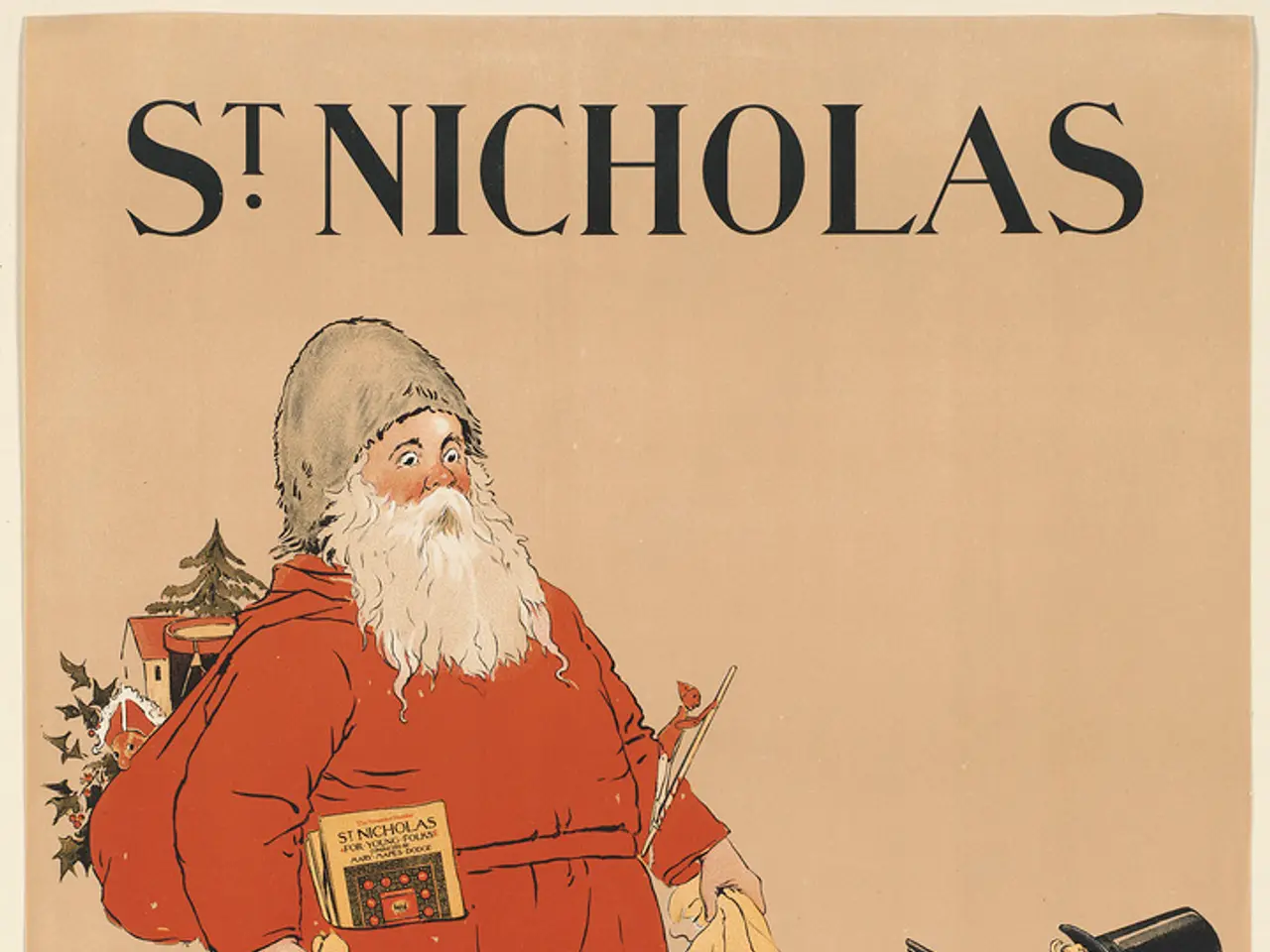Exploring the Evolution of Inline Skating Through the Ages
Roller skating, a popular recreational activity enjoyed by millions worldwide, has a rich history that dates back to the 18th century. The journey of roller skating began with John Joseph Merlin's rudimentary inline roller skate in 1760, considered the first attempt to emulate ice skating on wheels[3].
Fast forward to 1819, and Charles-Louis Petibled, a French inventor, patented the first wheeled skate[1]. Petibled's skates had wheels attached to a shaft, and the skate was attached to the shoe with belts. Although these skates were an improvement, they lacked the ability to curve or brake[1].
The critical advancement came in 1863 when James Plimpton, an American inventor, introduced the quad roller skate—four wheels arranged in a two-by-two (side-by-side pairs) configuration—with a turning mechanism allowing easier steering by leaning[1]. This design launched a wave of "rinkomania" in the 1860s and 1870s, popularizing roller skating as a social and recreational activity on both sides of the Atlantic[1].
Social and cultural impact: - Plimpton’s skate made roller skating accessible to beginners and popular as indoor entertainment during the Victorian era, transforming skating into a social sport and leisure pastime[1]. - Roller skating rinks emerged as community hubs, fostering social gatherings and new forms of courtship, recreation, and public entertainment in urban settings. - The rise of roller skating influenced fashion (e.g., specialized skating boots), music styles associated with skating rinks, and mobility culture in cities. - Over time, the culture evolved with the introduction of figure skating jumps on ice and inline variants, contributing to athletic and performance skating disciplines[2]. - The 20th century saw roller skating become a symbol of youth culture, notably in the 1970s-1980s with roller discos and skating as a form of expression and community among teens and young adults.
In the 1950s, drive-in restaurants sometimes featured servers on roller skates. Plastics innovations led to the roller skates' next big thing: plastic wheels in the 1960s. James Leonard Plimpton, the inventor behind the quad skate, fought off up to 300 patent infringement cases to defend his skate designs[1].
The Rollerblade, an inline skate, was updated by two brothers, Scott and Brennan Olson, in the late 1970s[1]. Today, the National Museum of Roller Skating is located in Lincoln, Nebraska, and the USA Roller Sports (USARS) is the national governing body of roller sports, overseeing roller hockey, speed skating, and artistic skating[1][2].
The world's largest roller skating rink is the Guptill Roller Skating Arena in Cahoes, New York, with a size of 64,000 square feet (5,946 square meters)[1]. Roller skating, with its rich history and lasting impact, continues to captivate and inspire generations of skaters.
References: 1. RollerSkating.com 2. Wikipedia (various articles) 3. Roller Skating Magazine (various articles)
- Although roller skating gained popularity as a social and recreational activity in the 1860s and 1870s, it went on to influence various aspects of lifestyle in the following centuries, including fashion, music, and mobility culture.
- From being a symbol of youth culture in the 1970s-1980s to hosting vibrant communities in skating rinks that served as gathering spots for social interaction and entertainment, roller skating continues to reflect on and shape diverse aspects of modern lifestyle.
